The Math on Durham's Small Lot Reform
Reducing minimum lot size is a prequisite to lowering housing costs
There are grave societal costs to removing the lowest rungs on the property ladder. If young families cannot afford their first home, they cannot afford their second either, and they remain renters for life. Nothing is wrong with being a renter by choice, but it would be a policy failure if we prevent families who do want to own from doing so.
America has seen a radical decline in starter homes this century (see graph below). I would refer to it as a collapse. For multiple generations, young families have had a relatively inexpensive path to buying a new home, enabling them to climb the property ladder and grow their families. Since 2000, this has changed.
Who Killed the Starter Home? is the subject of much research now, including Marina Rubina’s eponymous podcast, on which I was a guest last year. I will save my thoughts on the disappearance of the starter home for a separate post, as this one will deconstruct what my hometown did about it.
DURHAM’S SOLUTION
Prior to 2019, property owners in Durham couldn’t build a small home on a small lot if they wanted to. Zoning provisions dictated that the minimum lot size for a house be no less than 5,000 square feet (a pretty typical requirement in American zoning codes).
Because the minimum lot size correlates with the minimum house size, it results in larger homes being built, which in turn makes the community less affordable.
To address this problem, the Durham City Council passed a reform known as Expanding Housing Choices (EHC) by a nearly unanimous vote of 6-1.
EHC is anchored in a transformational small lot code, which allows for lots as small as 2,000 square feet, provided the homes are no larger than 1,200 square feet. Notably, the 2,000-square-foot lot represents a 60% reduction from the zoning norm of 5,000 square feet. And, because lot size correlates with house size, and house size inversely correlates with affordability, lot size reductions result in lower-cost housing.
DOES LOT SIZE MATTER?
These ambitious reforms have sparked multiple research studies.
Organizations ranging from Strongtowns to Harvard Joint Center on Housing Studies are asking:
What effect does lot size have on a city’s ability to deliver affordability?
Can reducing the minimum lot size help revive the largely dormant market for starter homes?
To explore this query, I conducted research using publicly available sources. I filtered on Zillow for sold homes built in Durham after 2019 with a maximum size of 1,250 square feet and a maximum lot size of 5,000 square feet.
The results show that Durham built and sold 129 homes that meet these criteria, whereas Raleigh had 7, and Chapel Hill only 1.
CALIBRATING FOR NOISE
Zillow is an extraordinary resource, but it can, at times, be imperfect and noisy (i.e., many search results that appear to meet the set criteria actually do not). To address this, I manually filtered each city’s results to eliminate homes that were any of the following: townhomes, built before 2019, and larger than 1,250 sq. ft.
In Durham, nearly all of these 129 were clearly built under the small lot code.
But the actual numbers for Durham are higher for two reasons. First, I am aware of many small lot homes that sold but did not appear in the search results. Second, Durham has developed a cottage industry of small lot homes for rent. None of those homes will show up as “sold” in a Zillow search.
For example, there are developments like The Corner of Trinity Park, which features seven small lot homes, but only four of them appear on Zillow.
My best estimate is that a total of 200-300 small lot homes have been built since 2019. I suspect another 200-300 are currently in schematic design or the permitting process.
CONCULSION
Citizens, builders, and developers are opting to construct a greater number of smaller homes, rather than fewer larger ones. The vast majority of detached infill housing in Durham is now on small lots, rather than larger conforming lots. This is no coincidence; it is the direct result of the ambitious EHC reforms. The results are relatively unique to Durham, indicating that, given the opportunity, the market will not operate at lower price points—it will thrive.
If you would like to view my data on Raleigh and Chapel Hill, please feel free to reach out.
Stay tuned for a report on my work with the Harvard Joint Center for Housing Studies




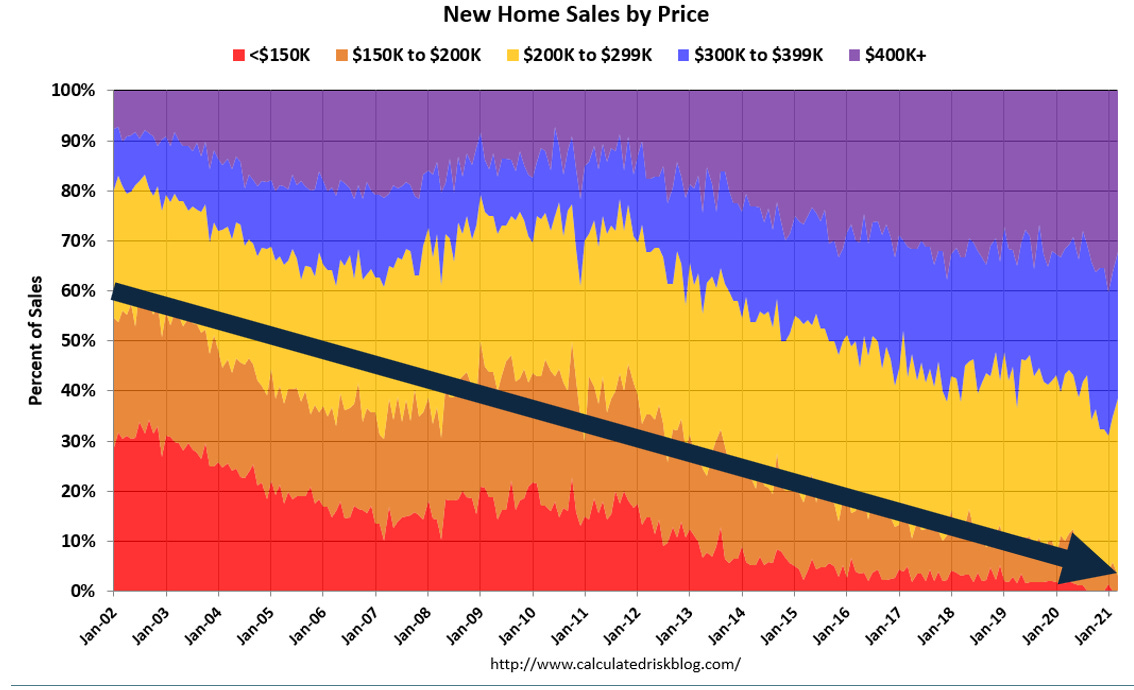
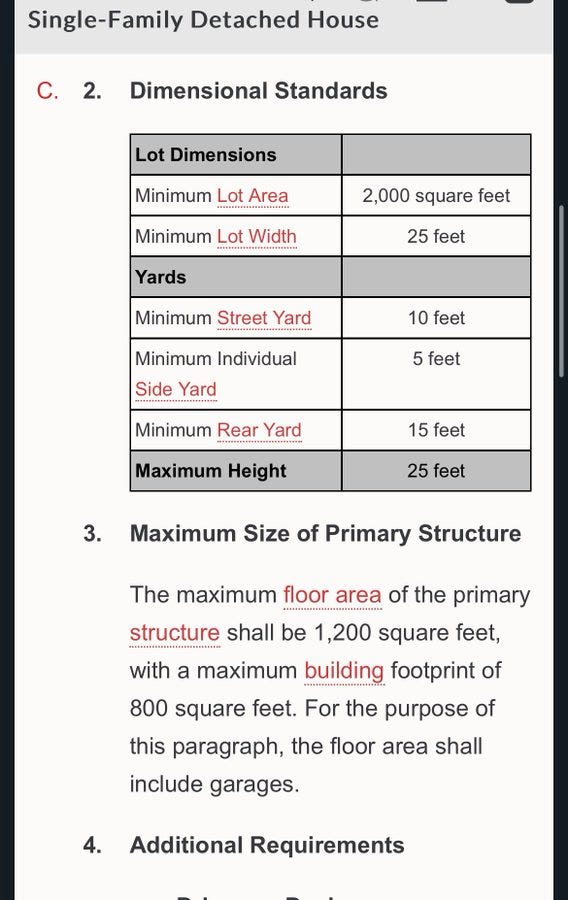
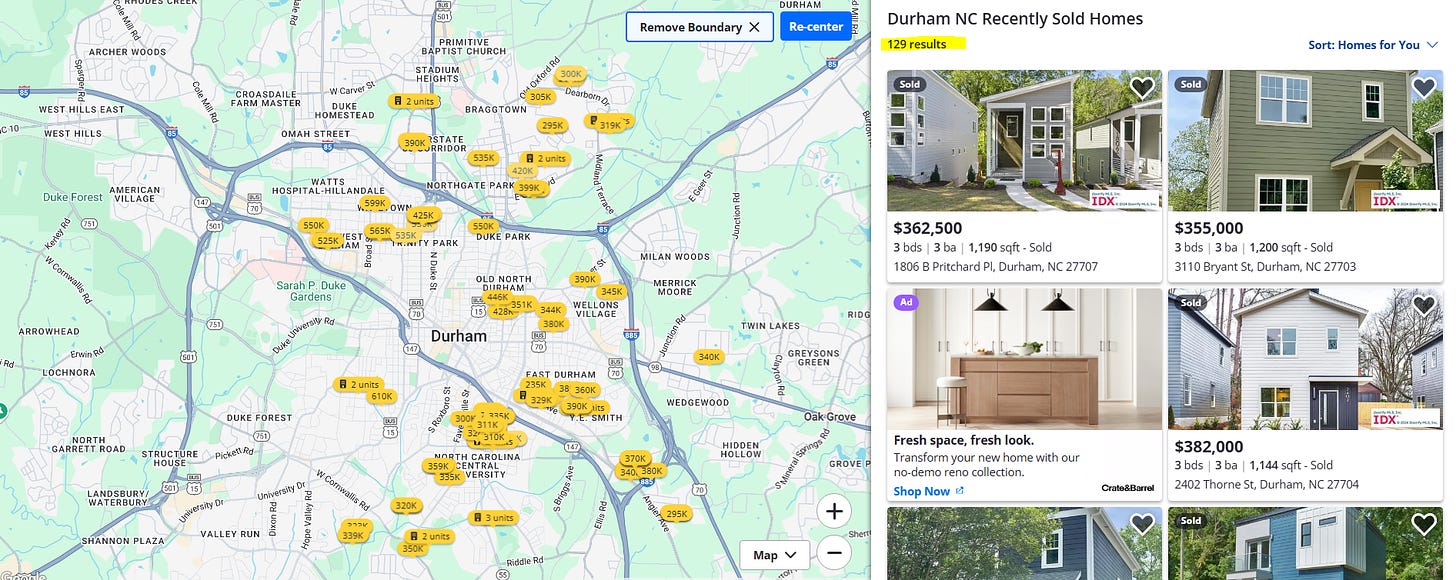
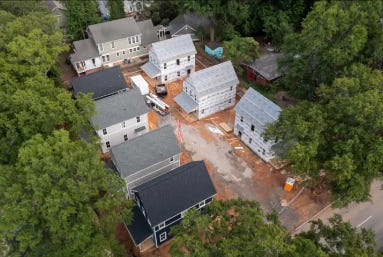
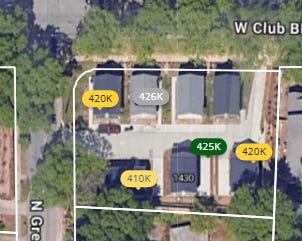
It seems like the cap on house size is also a salient feature for Durham’s reform, but the effects of that are hard to guess. I feel pretty sure that if there wasn’t the 800/1250 sf cap you’d see larger townhomes going on those lots, because those would maximize builder returns — the small lots would still make them cost competitive with similar sized houses on larger lots.
Suppose a developer has an option on an acre … what does the math look like? I feel like the scenario model of “more lots but with house sizes” vs “fewer lots but with uncapped house size” is pretty interesting — how do you decide which pencils better?
I'm a little confused by the numbers here. In the first section, you argue that starter home production has collapsed, showing that the sub-200k market is tiny compared to 20 years ago. However, the zillow screenshot for new construction shows only 300k+ prices.
Am I missing something? Aren't these homes still unaffordable, just on smaller lots?